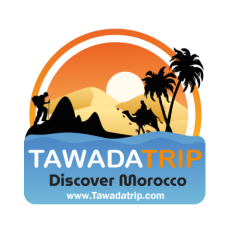Rising majestically across Morocco, the Atlas Mountains offer some of the most breathtaking trekking experiences in North Africa. With rugged peaks, deep valleys, and hidden Berber villages untouched by time, this mountain range is perfect for hikers seeking adventure, cultural encounters, and stunning landscapes. Whether you’re climbing Mount Toubkal, the highest peak in North Africa, or trekking through the lush Aït Bouguemez Valley, the Atlas Mountains promise an unforgettable journey.
1. Best Hiking Routes in the Atlas Mountains
🗻 Mount Toubkal Trek (4,167m) – The Ultimate Challenge
Duration: 2–3 days
Difficulty: Challenging
Best Time to Visit: April–October
For thrill-seekers, climbing Mount Toubkal, the tallest mountain in North Africa, is a must. Starting from Imlil, a charming Berber village, the trek takes you through rocky trails, high-altitude plateaus, and dramatic landscapes before reaching the summit, where panoramic views of the Sahara Desert and surrounding peaks await.
🏞 Aït Bouguemez Valley – The “Happy Valley”
Duration: 3–5 days
Difficulty: Easy to moderate
Best Time to Visit: March–November
For a more relaxed trek, head to the Aït Bouguemez Valley, known as the “Happy Valley” due to its fertile fields, traditional mud-brick houses, and welcoming Berber communities. This route offers a gentler hiking experience with lush landscapes and rich cultural interactions.
🌄 M’Goun Massif – A Hidden Gem
Duration: 5–7 days
Difficulty: Moderate to challenging
Best Time to Visit: May–October
Less crowded than Toubkal, the M’Goun Massif is a paradise for hikers who want to explore deep gorges, river crossings, and high-altitude pastures. The trek offers encounters with nomadic Berber tribes, stunning wildflower-covered valleys, and panoramic ridges.
2. Immersing in Berber Culture
One of the highlights of hiking in the Atlas Mountains is the chance to experience Berber hospitality. The indigenous Amazigh (Berber) people have lived in these mountains for centuries, preserving their traditions, language, and way of life.
🏡 Stay in a Traditional Berber Village
- Imlil, Aroumd, and Tacheddirt are some of the most scenic Berber villages where you can stay in local guesthouses (gîtes).
- Enjoy a warm welcome with mint tea, homemade tagine, and fresh Berber bread baked in traditional clay ovens.
🎶 Experience Berber Traditions
- Learn about weaving carpets, a skill passed down through generations.
- Listen to traditional Amazigh music, often played with handmade instruments.
- Discover the art of Tadelakt, a unique Moroccan plastering technique.
3. Essential Hiking Tips
✔ Hire a Local Guide – Even experienced hikers should consider hiring a local Berber guide for safety and cultural insights.
✔ Pack for All Seasons – The weather in the mountains can change quickly. Layered clothing, a warm jacket, and good hiking boots are essential.
✔ Respect Local Customs – Dress modestly and always ask before taking photos of locals.
✔ Stay Hydrated – Water sources are limited, so carry enough water or a purification system.
✔ Leave No Trace – Keep the mountains clean by taking your trash with you.
4. Best Time to Hike the Atlas Mountains
- Spring (March–May): Lush green landscapes and blooming wildflowers.
- Summer (June–August): Cooler in high altitudes but hot in lower valleys.
- Autumn (September–November): Ideal weather and fewer crowds.
- Winter (December–February): Snow-covered peaks, great for experienced hikers and mountaineers.
5. Why Hike the Atlas Mountains?
✅ Unforgettable Landscapes – From snowy peaks to lush valleys, the scenery is breathtaking.
✅ Cultural Immersion – Experience the warmth and traditions of the Berber people.
✅ Adventure & Serenity – Whether you seek a challenge or a peaceful retreat, the Atlas Mountains offer both.
A journey through the Atlas Mountains is more than just a hike—it’s a chance to connect with nature, discover ancient traditions, and challenge yourself in one of the most stunning regions of Morocco.

